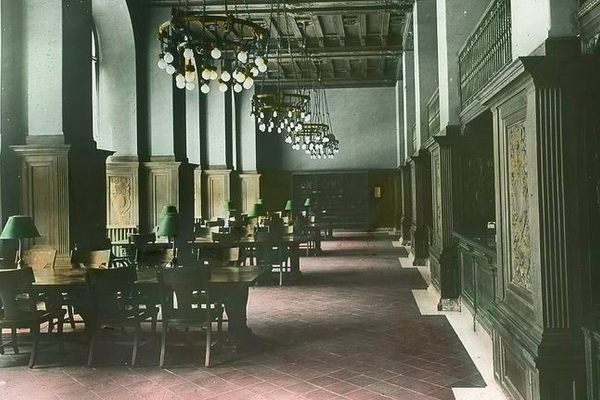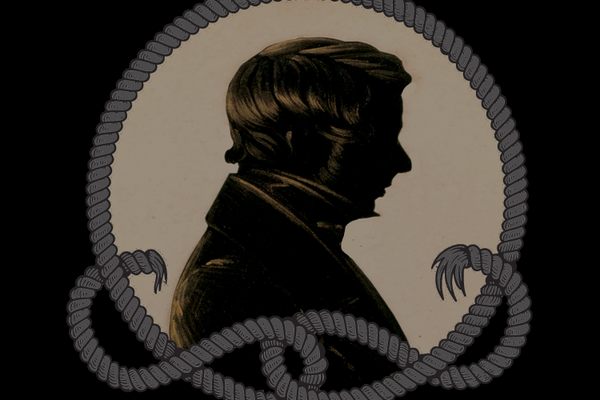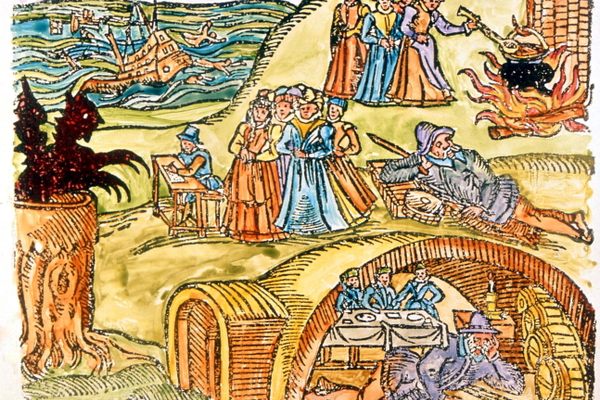The Femme Fatale Whose Tragic End Festers in the History of Rome
photograph by Emanuele
Beatrice Cenci haunts Rome. Though plenty of tour guides are eager to rehash stories of her headless body wandering the Sant’Angelo Bridge at night, she hardly needs that kind of carnival barking to get inside your head. Instead, you might see her name once, noting her unusual story. Then you notice her name again and again in every corner of the city. As her story unfolds, so does she, at every turn embodying a paradoxical feminine trope. She’s a damsel in distress, a brave heroine, a virgin sacrifice, and even a femme fatale all at once.
Beatrice was born in 1577. She lived in a large palazzo at the edge of the Jewish ghetto just off Via Arenula. Her father Francesco was a wealthy heir and full-time scoundrel who mostly used his huge fortune to buy his way out of prison. Everyone in Rome knew his reputation. He starved his servants until he was ordered by the papal courts to feed them. He took a mistress while married to his second wife, Lucrezia, then beat her until she performed sexual acts against her will (leading to a conviction for “unnatural vice”). Most appallingly, he confessed to molesting young boys in three separate court cases. But while others were burnt alive for less, he always escaped with more fines and a few months in jail.
Palazzo Cenci as it is today (photograph by the author)
While Francesco was paying off the justice system (such as it was), his children were doing their best to get away from him since he always seemed to have enough money for fines, but never enough to feed and clothe them. His son Giacomo disowned him and left. Cristoforo and Rocco, heirs to their father’s temper, were killed in duels. Antonina, Beatrice’s older sister, successfully petitioned the pope and asked him for permission to either marry without Francesco’s consent or join a convent to escape him. The pope consented to her marriage and stuck her father with a hefty dowry.
Francesco was (as usual) enraged. His fines had already begun to outstrip his inheritance and now he had Antonina’s dowry to deal with. His creditors’ harassment (as well as his newly acquired case of scabies) put him in a foul mood. There was no way he could let Beatrice pull the same trick as Antonina, so he moved his wife, Beatrice, and his youngest son Bernardo to one of his remote country estates in the mountains.
Statue of Beatrice Cenci by Harriet Goodhue Hosmer, illustrated by William Roffe (1857) (via Wikimedia)
There he imprisoned Beatrice and her stepmother Lucrezia in a sealed-up suite. Far removed from their nosey neighbors in Rome, Francesco’s depravity intensified. He insisted Beatrice and Lucrezia both sleep in the same bed with him. He began forcing Beatrice to scrape the scabies on his body from head to toe. Beatrice wrote desperate letters to her bother Giacomo, but Francesco only whipped her when he found them. Beatrice began plotting his death.
The estate had two servants who served as her hitmen, one whom Beatrice bribed and the other whom she seduced. On the night of the murder she gave Francesco opiate-laced wine then instructed the two servants to smash his head in, throw him off the balcony and make it look like the railing gave way. Francesco died that night but the murder was hurried and the cover-up amateurish. Investigators were quick to notice that a man who dies on his balcony usually doesn’t bleed out in bed first.
Beatrice Cenci in prison, painted by Achille Leonardi (19th century) (via Wikimedia)
The Cenci family — Giacomo, Lucrezia, Beatrice, and even young Bernardo — were immediately implicated and imprisoned. The servant Beatrice bribed tried to skip town but was hunted down and killed by a cousin of the Cencis. The servant she seduced was imprisoned with the family. Given his low rank, he was the first to be tortured to death though he never confessed that Beatrice was the mastermind behind the murder.
When the Cencis all pled innocent despite evidence to the contrary, Pope Clement VIII authorized the torture of the entire family. Each confessed on the rack. They were all sentenced to die, with the exception of 13-year-old Bernardo, who was sentenced to watch their deaths then live as a galley slave.
Ponte Sant’Angelo & Castel Sant’Angelo (photograph by Dennis Jarvis)
The gallows were raised in front of the Castel Sant’Angelo, and a massive crowd gathered on September 11, 1599 to watch what most considered a terrible miscarriage of justice. How could the papal courts allow Francesco’s crimes to slide, only to punish Beatrice when she tried to protect herself from further abuse? Some thought it was because Pope Clement was eager to snap up the remains of the Cenci fortune, though Pope Clement maintained that he simply couldn’t set a precedent for pardoning patricide.
The morning of their executions, the Cencis were driven in carts down Via di Montserrato accompanied by members of the Brotherhood of St. John the Decapitated, a confraternity dedicated to caring for the condemned. Today you can still see a plaque dedicated to Beatrice at 42 Via di Montserrato.
The plaque at 42 Via di Montserrato (photograph by the author)
Lucrezia was the first to die. She fainted on the chopping block before the sword severed her neck. Beatrice was the second, praised for her dignity and composure on the block. Finally, Giacomo suffered the worst fate due to his sex. His head was smashed with a mace then his body was drawn and quartered, a punishment too immodest even for a condemned woman.
Diorama of drawing and quartering at the criminological museum (photograph by the author)
There are still relics of that day on display at the Museo Criminologico in Rome: the “sword of justice” that killed Lucrezia and Beatrice, the clothes and insignia of the confraternity that accompanied them (featuring the severed head of St. John the Baptist), and a little diorama depicting a stripped man being drawn and quartered like Giacomo.
The “sword of justice” (via museocriminologico.it)
According to tradition, Beatrice’s body was buried in the church of San Pietro in Montorio, though her grave marker was allegedly destroyed by French troops in 1789. She experienced something of a resurrection in the 19th century. Mary and Percy Bysshe Shelley heard her story while on holiday in Italy, and Percy was moved to write a play based on her life. Subsequently, Beatrice appeared in works by Alexandre Dumas, Nathaniel Hawthorne, and Stendhal. She then trickled down to Antonin Artaud (who fittingly reserved the part of her father for himself), and even David Lynch (who inserted her portrait into Mulholland Drive).
The chapel at San Pietro in Montorio where Beatrice is allegedly buried (photograph by the author)
If you want to see the image of her that continues to haunt artistic imaginations, head to the Galleria Borghese. There you’ll find a portrait by Guido Reni. Painted about a year after her death, it’s portrays Beatrice the day before her execution dressed as a Sibyl, her eyes still damp from crying.
Guido Reni, “Portrait of Beatrice Cenci” (1662) (via Galleria Nazionale d’Arte Antica)
Read more strange tales of the dead at Elizabeth Harper’s All the Saints You Should Know.
Sources:
Beatrice Cenci by Corrado Ricci
Death Comes to the Maiden: Sex and Execution 1431-1933 by Camille Naish









Follow us on Twitter to get the latest on the world's hidden wonders.
Like us on Facebook to get the latest on the world's hidden wonders.
Follow us on Twitter Like us on Facebook